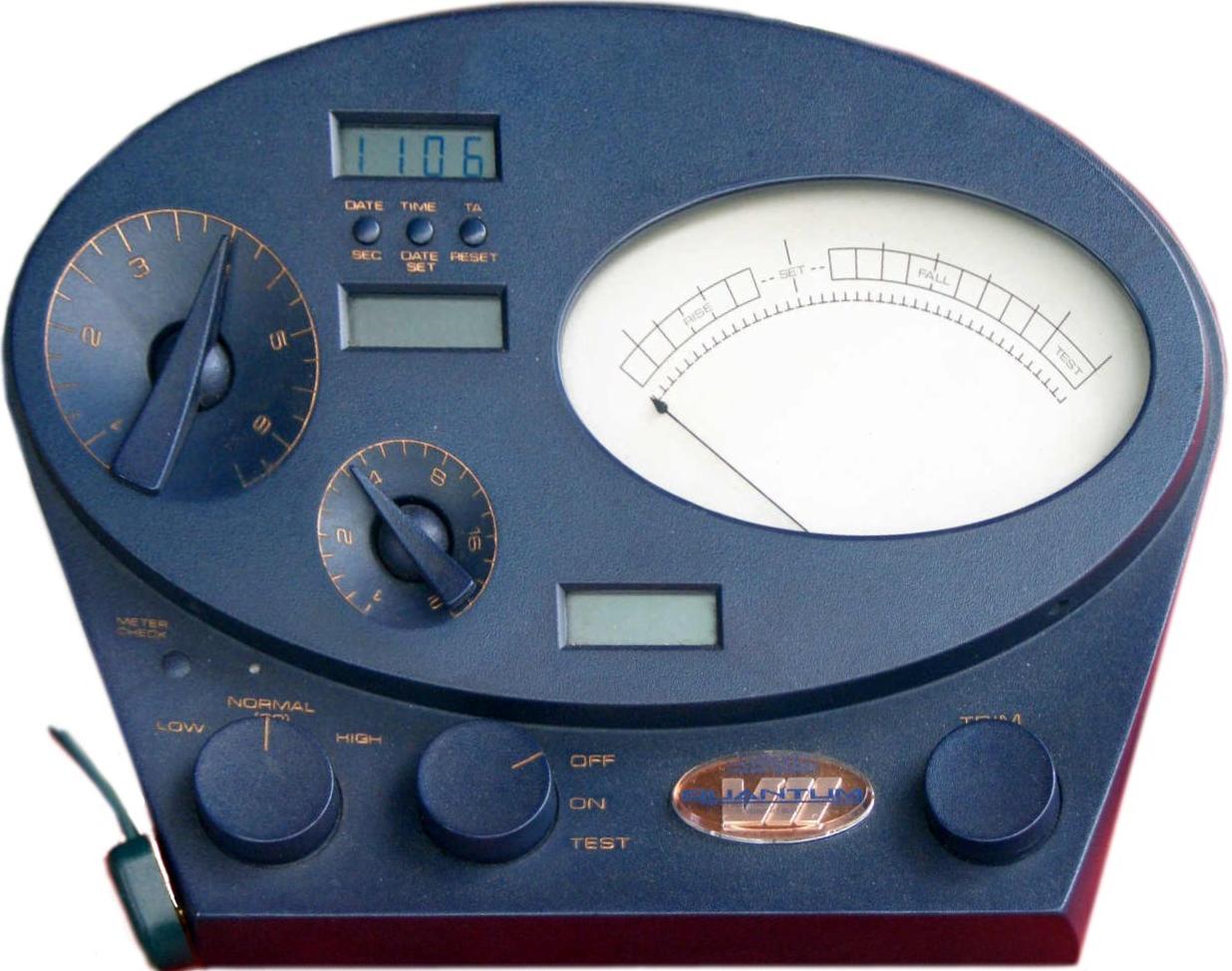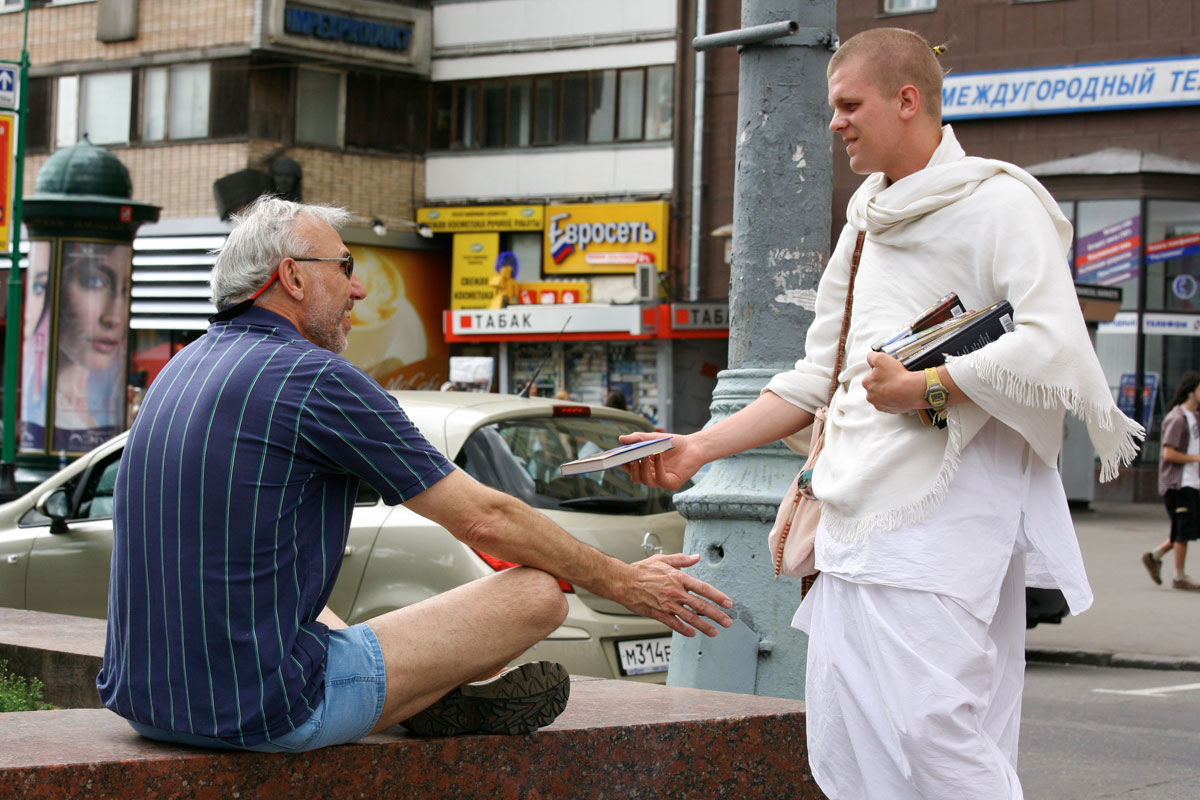|
The Bridge To Total Freedom
The Bridge to Total Freedom, or simply The Bridge, is a metaphor used by the Church of Scientology to describe believers' advancement. Scientology holds that believers advance to a state of Clear when they have freed themselves from the "reactive mind". This takes place in auditing, and is said to be a lifetime commitment. According to the organization, by reaching Clear status, followers are more self-confident, happy, and generally successful in careers and interpersonal relationships. Beyond the state of Clear, Scientologists move through several auditing steps called Operating Thetan (OT) levels. Scientology states that an OT is a state of spiritual awareness in which an individual is able to control self and the environment. According to D. R. Christensen, Scientology is "an individualistic religion with a hierarchical organization of the soteriological system, called the Bridge". The Bridge is described by the organization as a series of soteriological steps. The Bridge is ... [...More Info...] [...Related Items...] OR: [Wikipedia] [Google] [Baidu] |
Church Of Scientology
The Church of Scientology is a group of interconnected corporate entities and other organizations devoted to the practice, administration and dissemination of Scientology, which is variously defined as a cult, a business, or a new religious movement. The movement has been the subject of a number of controversies, and the Church of Scientology has been described by government inquiries, international parliamentary bodies, scholars, law lords, and numerous superior court judgements as both a dangerous cult and a manipulative profit-making business. In 1979, several executives of the organization were convicted and imprisoned for multiple offenses by a U.S. Federal Court. The Church of Scientology itself was convicted of fraud by a French court in 2009, a decision upheld by the supreme Court of Cassation in 2013. The German government classifies Scientology as an anti-constitutional sect. In France, it has been classified as a dangerous cult. [...More Info...] [...Related Items...] OR: [Wikipedia] [Google] [Baidu] |
Clear (Scientology)
In Dianetics and Scientology, Clear is a status afforded to followers by the Scientology organization, or by other Scientologists, after they complete certain activities. It is one of the major ostensible "states" practitioners strive to reach on their way up what the Scientologists call the Bridge to Total Freedom. Scientology followers are given the status of Clear when a person is deemed to be free of the influence of engrams – supposed unwanted emotions or painful traumas which Scientology claims are not readily available to the conscious mind. Scientologists believe that human beings accumulate anxieties, psychosomatic illnesses, and aberration due to receiving engrams throughout their current or past lives, and that by applying Dianetics, every single person can obtain the status of Clear.Goldstein, Laurie"Defectors Say Church of Scientology Hides Abuse" ''The New York Times'', March 6, 2010. A Clear is defined by the Church of Scientology as a person who no longer has a ... [...More Info...] [...Related Items...] OR: [Wikipedia] [Google] [Baidu] |
Reactive Mind
The reactive mind is a concept in the Scientology religion formulated by L. Ron Hubbard, referring to that portion of the human mind that is unconscious and operates on stimulus-response, to which Hubbard attributed most mental, emotional, and psychosomatic ailments: What can it do? It can give a man arthritis, bursitis, asthma, allergies, sinusitis, coronary trouble, high blood pressure and so on, down the whole catalog of psychosomatic ills, adding a few more which were never specifically classified as psychosomatic, such as the common cold. : — L. Ron Hubbard ('' Dianetics: The Modern Science of Mental Health'', 1999 paperback edition, p. 69) Despite the lack of scientific basis for his claims, Hubbard's book ''Dianetics: The Modern Science of Mental Health'' claimed that the reactive mind is composed of impressions of past events of pain and unconsciousness, which he called engrams. In Scientology, an auditor uses an E-meter (a galvanic skin response detector) to locate ... [...More Info...] [...Related Items...] OR: [Wikipedia] [Google] [Baidu] |
Auditing (Scientology)
In Dianetics and Scientology, auditing is a process whereby the "auditor" takes an individual through times in their current or past lives with the ostensible purpose of ridding the individual of negative influences from past events or behaviors. Auditing is meant to bring the individual to " Clear" status; thus, an individual being audited is known as a "preclear" or PC. Auditing was invented by L. Ron Hubbard as an integral part of Dianetics, first introduced in 1950. In 1951, auditing also became a core practice of Scientology. The E-meter, a device to measure electrodermal activity, became an integral part of auditing in scientology. According to the Church of Scientology, "one formal definition of auditing is the action of asking a person a question (which he can understand and answer), getting an answer to that question and acknowledging him or her for that answer". Hubbard claimed auditing provided many benefits including unsupported medical and psychological health effect ... [...More Info...] [...Related Items...] OR: [Wikipedia] [Google] [Baidu] |
Operating Thetan
In Scientology, Operating Thetan (OT) is a notional spiritual status above Clear. It is defined as "knowing and willing cause over life, thought, matter, energy, space and time (MEST)." According to religious scholar J. Gordon Melton, "It’s basically a variation of the Gnostic myth about souls falling into matter and the encumbrances that come with that" with the exception in that instead of Divine intervention, there is Alien intervention. The Church teaches Operating Thetan doctrine in eight separate stages, or Levels; however, the Church claims there are actually fifteen Levels, and critics argue the Church uses the missing Levels to incentivize believers into giving more money to the Church in order to be able to experience them once they are finally released. Sometimes the Church requires believers to retake, and therefore pay again for, previous courses in the meantime as they await the missing Levels. Each course costs a considerable amount of money, often thousands of U ... [...More Info...] [...Related Items...] OR: [Wikipedia] [Google] [Baidu] |
Soteriology
Soteriology (; el, σωτηρία ' "salvation" from σωτήρ ' "savior, preserver" and λόγος ' "study" or "word") is the study of religious doctrines of salvation. Salvation theory occupies a place of special significance in many religions. In the academic field of religious studies, soteriology is understood by scholars as representing a key theme in a number of different religions and is often studied in a comparative context; that is, comparing various ideas about what salvation is and how it is obtained. Buddhism Buddhism is devoted primarily to liberation from ''Duḥkha'' or suffering by breaking free of '' samsara'', the cycle of compulsory rebirth, by attaining nirvana. Many types of Buddhism, Theravada, Mahayana and Vajrayana (or Tantric), emphasize an individual's meditation and subsequent liberation from ''samsara'', which is to become enlightened. However, the Pure Land traditions of Mahayana Buddhism generally focus on the saving nature of the Celestial B ... [...More Info...] [...Related Items...] OR: [Wikipedia] [Google] [Baidu] |
New Religious Movement
A new religious movement (NRM), also known as alternative spirituality or a new religion, is a religious or Spirituality, spiritual group that has modern origins and is peripheral to its society's dominant religious culture. NRMs can be novel in origin or they can be part of a wider religion, in which case they are distinct from pre-existing Religious denomination, denominations. Some NRMs deal with the challenges which the modernizing world poses to them by embracing individualism, while other NRMs deal with them by embracing tightly knit collective means. Scholars have estimated that NRMs number in the tens of thousands worldwide, with most of their members living in Asia and Africa. Most NRMs only have a few members, some of them have thousands of members, and a few of them have more than a million members.Eileen Barker, 1999, "New Religious Movements: their incidence and significance", ''New Religious Movements: challenge and response'', Bryan Wilson and Jamie Cresswell editor ... [...More Info...] [...Related Items...] OR: [Wikipedia] [Google] [Baidu] |
James R
James is a common English language surname and given name: *James (name), the typically masculine first name James * James (surname), various people with the last name James James or James City may also refer to: People * King James (other), various kings named James * Saint James (other) * James (musician) * James, brother of Jesus Places Canada * James Bay, a large body of water * James, Ontario United Kingdom * James College, a college of the University of York United States * James, Georgia, an unincorporated community * James, Iowa, an unincorporated community * James City, North Carolina * James City County, Virginia ** James City (Virginia Company) ** James City Shire * James City, Pennsylvania * St. James City, Florida Arts, entertainment, and media * ''James'' (2005 film), a Bollywood film * ''James'' (2008 film), an Irish short film * ''James'' (2022 film), an Indian Kannada-language film * James the Red Engine, a character in ''Thomas ... [...More Info...] [...Related Items...] OR: [Wikipedia] [Google] [Baidu] |



